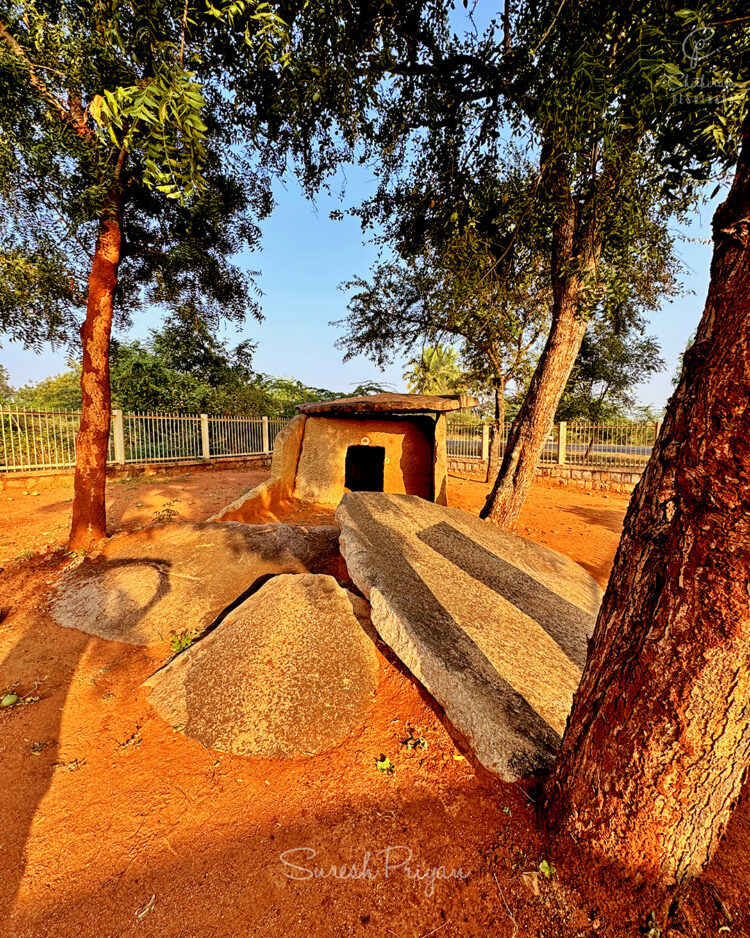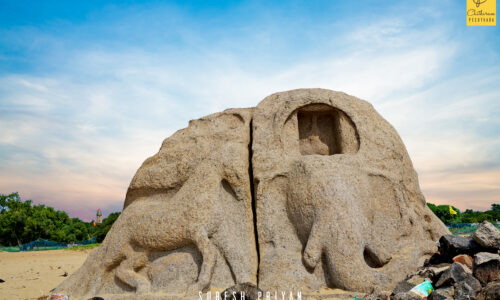தென்னிந்திய வட இந்தியக் கலைகளின் சங்கமம் செய்யும் பட்டடக்கல்லில் இந்த நினைவுச்சின்னம் காணப்படுகிறது. கர்நாடக மாநிலம் பாகல் கோட்டை மாவட்டத்தில், கிருஷ்ணா நதியின் துணை நதியான மலப்பிரபா நதியின் கரையில் அமைந்துள்ள பட்டடக்கல் தொகுப்பு கோயில்களில். அதன் அருகே இந்த 3000 ஆண்டுக்கு முந்தய நினைவுச்சின்னம், பட்டடக்கல் தொகுப்பு கோயில்களில் போகும் பிரதான சாலை ஓரத்தில் இருந்தாலும், மக்களால் கவனம் ஈர்க்கப்படாமல் தனிமையில் மக்கள் வருகைக்காக காத்துக்கொண்டிருக்கிறது.

Iron Age Megalith – Dolmen site in Pattadakal
Bachinagudda, Pattadakallu/Pattadakal, Karnataka, India.
YouTube: https://www.youtube.com/c/chithirampesuthada
Facebook: https://www.facebook.com/chithirampesuthadasuresh/
Instagram: https://www.instagram.com/chithirampesuthada/
Flickr: https://www.flickr.com/photos/chithirampesuthada/
Web: https://chithirampesuthada.com/
Pattadakal grew into a unique centre of distinct and chief temple models from the latter part of the Seventh Century. On the left bank of the river are nine temples located near one another, roughly in the north-south alignment. About a hundred metres away from the temple complex at the northern end is the Badami—Aihole main road. On the western side is the local road leading to the village nearby.
Almost at the western outskirts of the village, Pattadakal is Bachangudda, an isolated high hill with a rounded top. Moving further eastwards, some distance by the road on the right side, are imposing rude stone megalithic monuments of two types: the port-hole and the passage chambers of the Early Iron Age.
The former is a large, north-south-oriented double-chambered tomb. Oblong in plan, built with sizeable pinkish granite stone slabs, set on the edge in a vertical position so that the upright stone slabs about one another without any binding material.
On the top is a single large slab(capstone) that outstretches on all sides horizontally. Another slab is set up inside the chamber, dividing into two parts. It has a giant squarish port hole at the centre. Initially, a heap of rubble stones up to the capstone was around on the exterior side of the tomb.
Thus, the whole structure was a tiny hemispherical mound, but the heap was disturbed, and the chamber was exposed due to vandalism. The subchamber on the north side had collapsed to the ground level. What is extant now is roughly half the part of an extensive megalithic tomb about 3000 years old.
The other one nearby is a rectangular chamber of red sandstone with a passage on the front side, initially now missing. Empirical engineering and planning skills are displayed in their construction. These two are the remnants of an extensive site with numerous similar monuments.


Reference: World Heritage Series, Pattadakal
Thanks for supporting us!
To contribute:
PayPal us – paypal.me/sureshpriyan
Google Pay us – priyan.suresh@okicici




